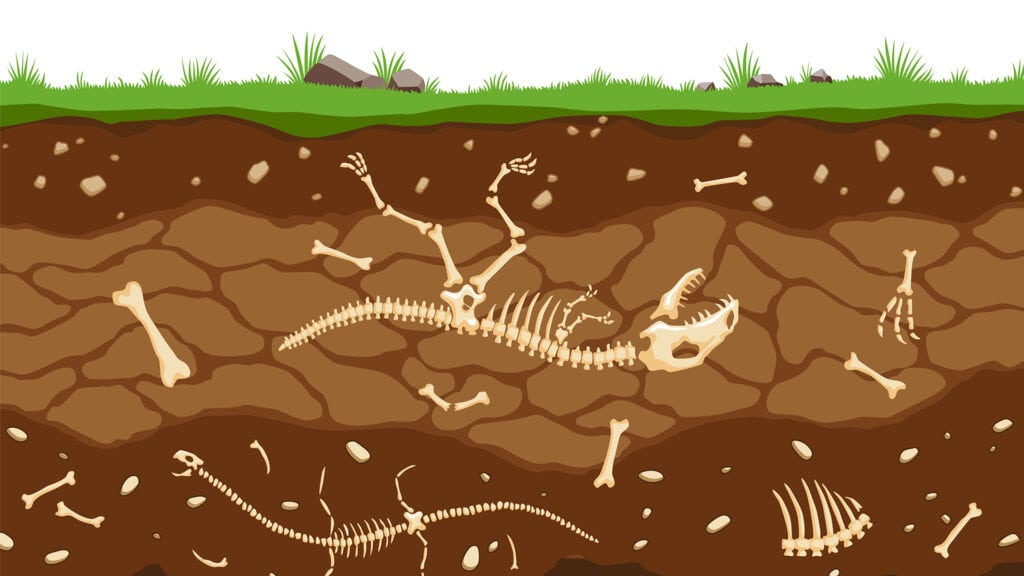Have you ever wondered why we know what dinosaurs looked like millions of years ago? The answer is hidden deep in the earth: fossils. They are like time capsules that open the past to us and without which we would be clueless about life on Earth and evolution. But what are fossils and how are they formed?
The word “fossil” comes from the Latin (“fossilis”) and means “dug up”. Fossils are the remains, imprints or traces of living creatures from earlier geological eras that have been preserved in the rock. They can reveal mysterious events from the distant past and give us an insight into the life of plants, animals and even pre-humans.
The first dinosaur was discovered in England in 1824: a Megalosaurus! Although dinosaurs became extinct around 66 million years ago, their fossil remains, such as bones and teeth, allow us to explore how they once lived.
Fossils can occur in various forms, for example hard fossilized material such as bones and teeth, imprints of tracks such as footprints in fossilized mud or the burrows of small animals such as worms. Plants, fungi and bacteria can also become fossils.
Important: A fossil is only considered a fossil if it is at least 10,000 years old.
The process of fossil formation:
- A living creature dies, and its remains are covered by sediment.
- Over time, these sediments solidify into rock and the remains are fossilized.
- The rock layers are brought back to the surface by erosion and/or tectonic forces. This is how fossils become visible and can be discovered by researchers.
Fossils are formed over millions of years through various processes:
- Petrification: organic material, such as bones, is replaced by minerals over time. The remains are gradually decomposed, while minerals fill the cavities. This creates a hard, stable imprint.
- Enclosure: Living creatures are encased in resin (later amber) or ice, which also preserves fine details, like hair or fur.
- Imprints and traces: If a living creature leaves an imprint in soft mud, it can harden and become a fossil over time.
Did you know that even fossilized faeces (coprolites) count as fossils? Researchers have found fossilized excrement from dinosaurs and Neanderthals.

